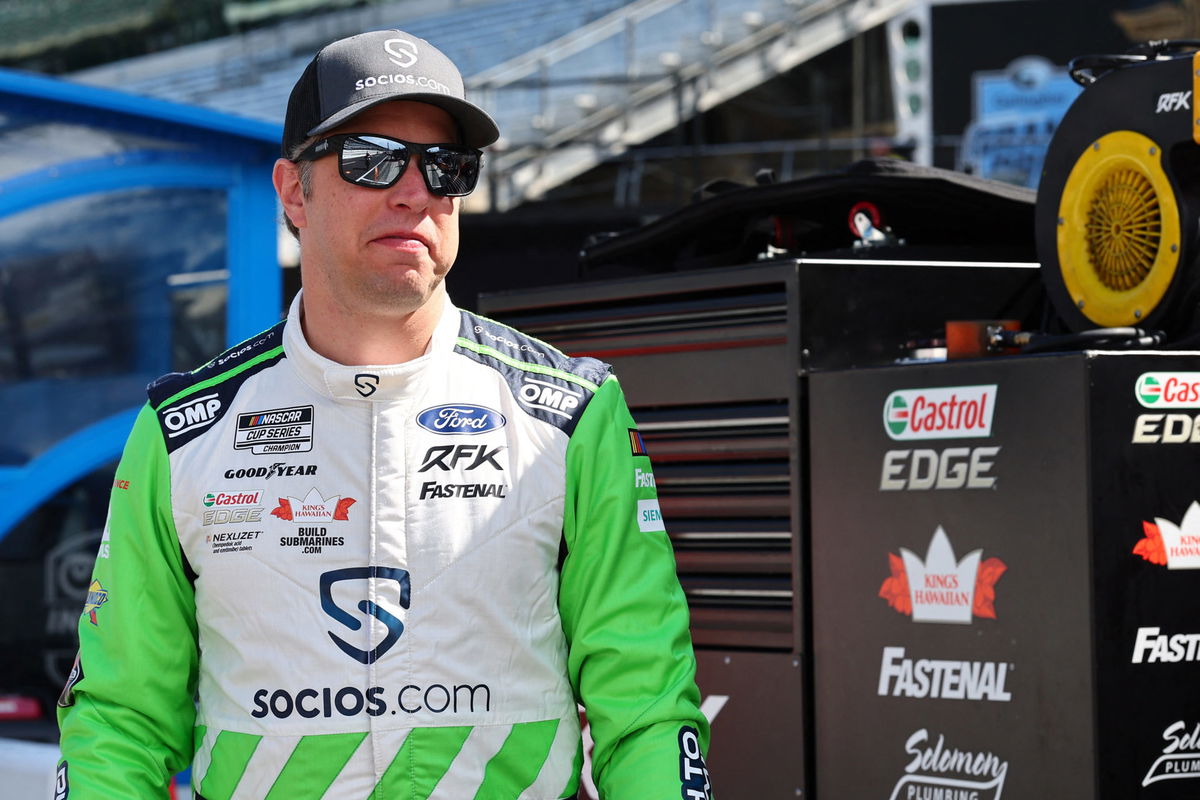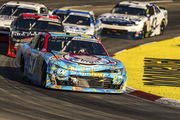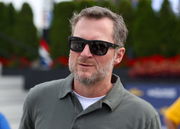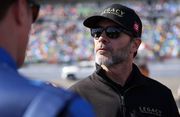

What is the Vortex theory? In aerodynamics, it is the study of regions within a fluid, including air, where the flow rotates around an axis line, leading to various effects. While vortices are important in aerodynamics, especially in racing, they are not typically associated with making clouds disappear or causing significant weather changes. However, some believe it is responsible for rain in NASCAR. Is it true?
Watch What’s Trending Now!
It’s theoretically possible that the high-speed circulation of cars on large speedways could create some vortical effects. In fact, Brad Keselowski expressed his belief in the vortex theory, particularly regarding its impact on races shortened due to rain. However, NASCAR insider totally disagrees after the recent observation at Bristol.
ADVERTISEMENT
NASCAR insider counters Brad Keselowski’s belief
Many of us can recall instances when it appeared that rain was imminent, only for the race to begin without any weather disruptions. However, if one were to gather systematic data, they would discover just as many cases where a race started but had to be called off due to rain. This highlights the inherent unpredictability of weather conditions. If the “Vortex Theory” were a reliable predictor, we would seldom witness races being rained out.
Over the years, there has been a vocal community that passionately advocates the existence of the “Vortex Theory”. They feel it has an influence on NASCAR races. Notably, Darrell Waltrip is among those who firmly believe in the theory’s validity.
The vortex theory is the real deal, I can led to water but I can’t make you drink!!
— Darrell Waltrip (@AllWaltrip) April 13, 2019
ADVERTISEMENT
After the Atlanta race this year, Brad Keselowski appeared to be genuinely convinced by the “Vortex Theory,” further adding to the discourse surrounding this unconventional belief.
Hear me out, I once too was not a believer. In 13 years of cup racing, this has played out countless times. Too many times to be dismissed, Idk how or why it seems to work.
We need a serious MythBusters episode on “The Vortex Theory”
— Brad Keselowski (@keselowski) July 11, 2023
ADVERTISEMENT
During the recent Bristol race, which marked the last event of the round of 16, concerns about rain led to a delay in the race’s start. It eventually commenced at 7:10 PM. However, despite the precautions, there was a yellow flag due to rain on lap 107. Notably, cars came into the pit area around lap 137 and remained there for approximately 13 minutes. These developments raised questions and discussions among believers of the “Vortex Theory”. They also prompted comments and tweets like the one from Jeff Gluck.
His Tweet read, “All the people who usually tweet at me about the Vortex Theory got real quiet on that one”
All the people who usually tweet at me about the Vortex Theory got real quiet on that one.
— Jeff Gluck (@jeff_gluck) September 16, 2023
ADVERTISEMENT
According to information from the National Weather Service, a typical storm has a diameter of around 15 miles and lasts for an average of 30 minutes. In contrast, Daytona International Speedway has an effective diameter of approximately 0.8 miles. Even a racetrack as sizable as Daytona isn’t substantial enough to influence weather patterns.
Watch This Story: $3.6 Billion Tire Company’s Blunder Cost Martin Truex Jr. His Shot At Another Title
If such weather effects can’t occur at Daytona, larger than most other NASCAR tracks, it’s even less likely to happen at smaller venues like Martinsville or Bristol. Despite scientific explanations, fans often hold differing beliefs. They expressed their own views and theories in comments.
ADVERTISEMENT
Top Stories
What Is NASCAR’s 5-Strike Rule That Could Change Its Future? Check All Details Here

Rick Hendrick Strikes Fear in NASCAR Fans With Chevy’s New “Illegal” Car

Dale Jr. Reveals How Permanent Charters Could Turn NASCAR Into a Billionaire’s Club With a Brutal Reality Check

Jimmie Johnson’s NASCAR Driver Sends Ripples Through Garage With Early Retirement Confession

Martin Truex Jr’s Former Crew Chief Ends 12-Year Fight In Huge Personal Announcement

Debate Over the Vortex Theory
The comment section saw a lively exchange of opinions from fans. Some firmly embraced the “Vortex Theory” and others expressed skepticism. The prevailing sentiment appeared to lean towards belief in the theory, as many fans view it as something positive for the sport.
One fan defended the theory, emphasizing, “Why do you have to hate on a positive attitude? That’s all the vortex theory is.”
ADVERTISEMENT
One wrote, “Still a believer here!! Witnessed at Charlotte”
However, some remained cautious, acknowledging, “The Vortex theory like the weather is never a 100% guarantee. Now when it appears to be working again in our favor, we will remount the cries”
A more neutral viewpoint emerged, “It’s fun to believe Jeff”
ADVERTISEMENT
“Only rained after the yellow here in the stands jeff. ALL HAIL THE VORTEX”
“I still believe”
A comment that grabbed attention was, “God is a NASCAR fan.”
ADVERTISEMENT
Several comments linked the theory to specific race events, noting how the weather seemed to react to the cars on the track, particularly during stage slowdowns,
“It worked while the cars were running. When they slowed for the stage the rain came. Vortex theory still in effect.”
Ultimately, the debate continues. Believers remain convinced of the theory’s validity. However, its impact on NASCAR events remains uncertain. What are your thoughts on this matter?
ADVERTISEMENT
ADVERTISEMENT
ADVERTISEMENT

